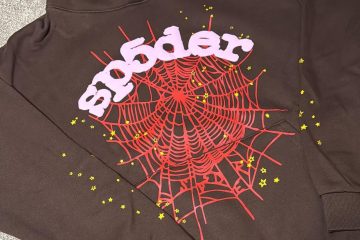So, you’ve got a stunning PNG logo, artwork, or custom design and you’re ready to bring it to life with thread and fabric. Whether you’re using it for custom merch, a heartfelt gift, or starting your embroidery side hustle, the first step is crucial: turn that PNG to embroidery file.
With the right tools, you can convert your PNG to an embroidery file online in just a few clicks. No complicated software, no steep learning curve—just upload, tweak, and download. In this guide, we’ll show you how to stitch your vision from screen to stitch with minimal hassle.
What Is an Embroidery File, Anyway?
An embroidery file is a special file format that tells your embroidery machine how to sew your design. It includes instructions like:
- Stitch placement
- Stitch type (satin, fill, running, etc.)
- Thread colors and order
- Machine-specific formatting
Popular embroidery file types include:
- .PES (Brother, Babylock)
- .DST (Tajima)
- .EXP (Melco)
- .JEF (Janome)
Your machine won’t accept a regular image (like a PNG)—you need to convert it into a file format it understands.
Why PNG Files?
PNG is one of the most common image formats used for logos, illustrations, and transparent designs. It’s perfect for embroidery prep because:
- It preserves clean edges
- Supports transparency
- Maintains high image quality
The challenge? PNG files are images—not stitch-ready. So they must be digitized before they can be embroidered.
What Is Digitizing?
Digitizing is the process of converting an image (like a PNG) into an embroidery file. It tells the embroidery machine:
- What stitch to use
- How dense the stitching should be
- Where to begin and end stitching
- What direction each stitch goes
You can do this with professional software or—thankfully—online converters.
How to Convert PNG to Embroidery File Online
If you’re looking for speed, simplicity, and affordability, online tools are a fantastic option. Here’s how to do it:
Step 1: Choose an Online Converter
There are several trustworthy platforms that allow you to upload a PNG and receive an embroidery file. Some popular options include.
These platforms typically offer:
- Fast turnaround (sometimes instant)
- Support for multiple file types (PES, DST, JEF, etc.)
- Affordable pricing
- Optional manual digitizing for higher accuracy
Many services offer both free auto-digitizing and paid professional digitizing, depending on complexity.
Step 2: Upload Your PNG
Choose your file and upload it directly to the converter. Most sites will walk you through:
- Selecting the file format for your machine (e.g., PES for Brother)
- Entering your desired size in inches or millimeters
- Choosing thread color preferences
- Adding any notes or instructions
Pro Tip: The cleaner and simpler your PNG design, the better it will convert.
Step 3: Review and Confirm
Once uploaded, some converters offer a preview of the stitch path. Others may send you a sample for approval before finalizing the file. This step ensures your design looks right and functions properly when stitched.
If you’re using a professional digitizing service, this is where a real person tweaks and cleans your design to make it stitch-perfect.
Step 4: Download the Embroidery File
Once the conversion is complete, download your embroidery file in the format you chose (like .PES or .DST). You can then transfer it to your machine using:
- A USB drive
- Wi-Fi transfer (if supported)
- SD card or direct cable, depending on your machine
Should You Use Auto or Manual Digitizing?
Here’s the difference:
Auto-Digitizing
- Fast and affordable (or free)
- Best for simple logos and shapes
- May struggle with complex designs or fine details
Manual Digitizing (by a human)
- More accurate
- Great for detailed or professional embroidery projects
- Costs more but usually worth it for clean results
If your PNG has clean lines and bold elements, auto-digitizing might be all you need. For fine details, shadows, or tricky text, manual digitizing is the way to go.
Common Embroidery File Formats by Machine
| Machine Brand | File Format |
| Brother, Babylock | .PES |
| Janome | .JEF |
| Bernina | .EXP |
| Tajima | .DST |
| Melco | .EXP |
| Singer | .XXX |
Make sure you choose the right format when downloading from an online converter!
Things to Keep in Mind When Converting
Here are a few tips to get the best stitch results from your PNG:
Simplify Your Image
Avoid gradients, tiny text, and overly detailed graphics. The embroidery machine can only do so much with thread!
Use High-Resolution PNGs
A crisp, clean file leads to better edge detection and more accurate digitizing.
Test on Sample Fabric
Always stitch a sample before using your final garment or product. Adjust tension, thread, and placement as needed.
Use the Right Stabilizer
The foundation matters! Choose a stabilizer based on your fabric type to prevent stretching or puckering.
Who Benefits from Online PNG to Embroidery Conversion?
This process is ideal for:
- Crafters and DIYers creating custom gifts or decor
- Etsy shop owners looking to personalize products
- Small businesses branding workwear or uniforms
- Hobbyists trying out embroidery without expensive software
- Designers turning digital art into stitched pieces
Even beginners can use online tools to bring their ideas to life—no steep learning curve required.
Final Thoughts: Turn Pixels into Thread
Converting a PNG to an embroidery file doesn’t need to be complicated or costly. With today’s online tools, you can stitch your vision from digital to fabric in just a few clicks. Whether you’re going for a bold logo, custom monogram, or detailed artwork, you now have everything you need to get started.
So what are you waiting for? Design it, upload it, convert it—and start stitching your story.





